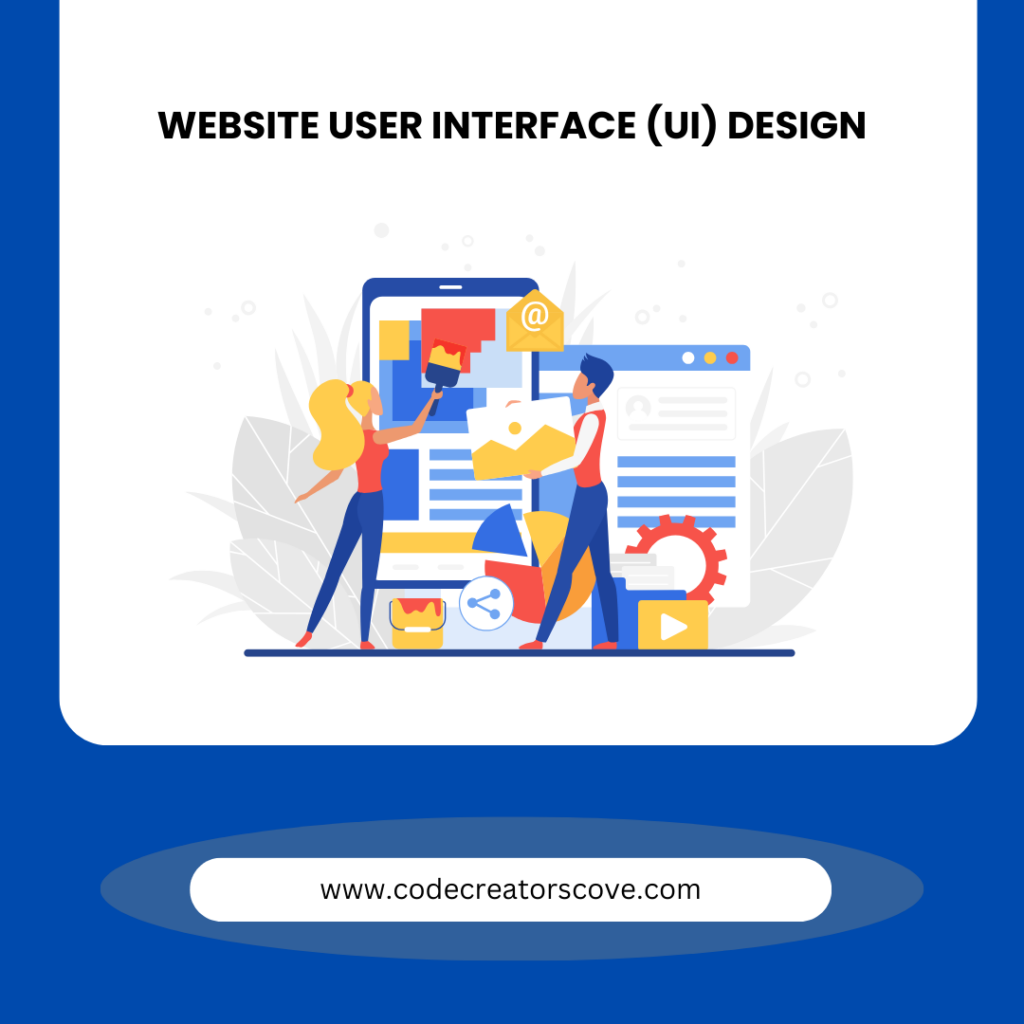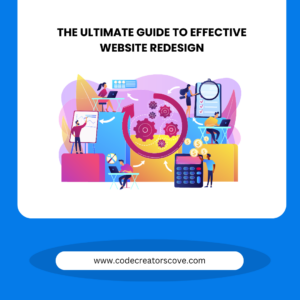In the digital landscape, User Interface (UI) design is the bridge between users and your website’s functionality. Crafting an exceptional UI is about aesthetics and creating an intuitive and seamless experience that guides users effortlessly. This comprehensive guide will delve into the fundamental principles and strategy of UI design, providing you with the tools to create engaging, user-centric interfaces.
Understanding User Interface (UI) Design
User Interface (UI) design involves creating a website’s visual elements and interactive features. This encompasses everything users interact with, including buttons, menus, icons, and layouts. The primary aim is to make the interaction as efficient and enjoyable as possible, aligning with the overall goals of the website while ensuring that users can navigate and engage with the content effortlessly.
The Importance of User Interface (UI) Design
The significance of User Interface (UI) design cannot be overstated. It serves as the gateway through which users interact with your website, and its quality directly impacts their experience and perception of your brand. Here’s an in-depth look at why UI design is so crucial:
1. First Impressions Matter
The UI design is often the first thing users notice when they land on your website. A well-designed interface creates a positive first impression, which is essential for capturing and retaining user interest. Users form judgments about the credibility and professionalism of your website within seconds of their arrival. A visually appealing, user-friendly design can establish trust and encourage users to explore further.
2. Enhances User Experience (UX)
UI design is integral to the overall User Experience (UX). A well-thought-out UI facilitates smooth interactions, guiding users effortlessly through tasks such as finding information, making purchases, or contacting support. By prioritizing user experience, you ensure that users can accomplish their goals efficiently and enjoyably, leading to higher satisfaction and engagement.
3. Reduces Bounce Rates
A poorly designed UI can lead to high bounce rates, where users quickly leave your site because it’s difficult to use or visually unappealing. By investing in effective UI design, you can create an engaging and easy-to-navigate interface that keeps users on your site longer. Lower bounce rates generally correlate with higher user retention and improved SEO performance.
4. Supports Accessibility
An effective UI design ensures that your website is accessible to all users, including those with disabilities. Implementing accessibility features like keyboard navigation, screen reader compatibility, and color contrast guidelines not only complies with legal standards but also broadens your audience and demonstrates social responsibility.
5. Fosters Brand Identity
UI design plays a critical role in reinforcing your brand identity. Consistent use of colors, fonts, and visual elements aligns with your brand’s personality and values. A cohesive and distinctive UI helps differentiate your brand from competitors and creates a memorable impression.
6. Drives Conversions
Effective UI design can significantly impact your website’s conversion rates. By strategically placing call-to-action buttons, using persuasive design elements, and optimizing the user flow, you can guide users toward desired actions such as signing up for a newsletter, making a purchase, or requesting a demo.
7. Encourages User Engagement
A well-designed UI encourages users to interact more deeply with your content. Engaging elements such as interactive infographics, videos, and gamified features can capture users’ attention and encourage them to spend more time on your site. Increased engagement often leads to higher user satisfaction and loyalty.
8. Promotes Efficient Navigation
UI design is crucial for creating an intuitive navigation system that helps users find what they need quickly and easily. Well-organized menus, clear labels, and logical information hierarchy ensure that users can navigate your site with minimal effort, reducing frustration and enhancing the overall experience.
9. Facilitates Better Communication
Effective UI design can enhance communication between users and your website. Features such as contact forms, live chat, and feedback mechanisms allow users to easily reach out for support or provide input. A user-friendly interface makes it simpler for users to communicate their needs and for you to address them promptly.
Core Principles of Effective User Interface (UI) Design
Designing a user interface that is both functional and visually appealing requires a foundation built on core principles that guide the overall approach. These principles ensure that the design not only meets user needs but also enhances the overall experience.
1. Clarity and Simplicity
Clarity and Simplicity are fundamental to creating an effective UI. A clean design prevents users from feeling overwhelmed and ensures that key information is easily accessible. By focusing on essential elements and avoiding unnecessary clutter, you help users navigate and interact with the interface more efficiently.
– Visual Clarity: Use ample whitespace to separate different sections and elements. This helps prevent visual clutter and allows users to focus on the content without distraction.
– Simplified Navigation: Design intuitive navigation menus that make it easy for users to find what they’re looking for. Avoid overcomplicating the navigation structure with too many options or nested menus.
2. Consistency
Consistency in UI design fosters familiarity and ease of use. A uniform design across all pages helps users predict how elements will behave and improves their overall experience. Maintaining a consistent style and interaction pattern throughout the website builds trust and reduces the learning curve for users.
– Design Patterns: Use consistent design patterns for similar functions. For instance, all buttons should look and behave the same way, and similar elements should have the same visual style.
– Branding: Maintain consistency in branding elements such as color schemes, typography, and iconography. This reinforces brand identity and creates a cohesive experience.
3. Accessibility
Accessibility is about making your website usable for all users, including those with disabilities. Designing with accessibility in mind ensures inclusivity and broadens your audience. This not only complies with legal standards but also demonstrates your commitment to creating a positive experience for everyone.
– Color Contrast: Ensure sufficient contrast between text and background colors to make content readable for users with visual impairments.
– Keyboard Navigation: Design interactive elements so they can be navigated using a keyboard. This is crucial for users who rely on keyboard-only navigation.
– Screen Readers: Use semantic HTML and ARIA (Accessible Rich Internet Applications) roles to ensure screen readers can accurately interpret and relay content.
4. Visual Hierarchy
Visual Hierarchy organizes and prioritizes content to guide users’ attention effectively. It helps users understand the importance and relationship of different elements, making it easier for them to process information and navigate the interface. Proper visual hierarchy ensures that key messages and actions stand out.
– Size and Scale: Larger elements or text should draw more attention, indicating their importance. For instance, headings should be larger than body text.
– Color and Contrast: Use color and contrast to highlight important elements. Call-to-action buttons should stand out from other elements through color and size.
– Spacing: Adequate spacing between elements helps differentiate sections and improves readability.
5. Feedback and Response
Feedback and Response involve providing users with clear indications of their actions within the interface. Effective feedback helps users understand the result of their interactions, guiding them and reducing uncertainty.
– Interactive Feedback: Implement visual or auditory feedback for user actions, such as button clicks or form submissions, to confirm that their actions have been registered.
– Error Handling: Provide clear and actionable error messages to help users correct mistakes and continue their tasks without frustration.
Essential Guidelines for Effective UI Design
Adhering to certain guidelines can significantly enhance the quality and effectiveness of your UI design. These best practices help ensure that the design is not only visually appealing but also functional and user-friendly.
1. Simplify and Streamline
Simplicity is key to effective UI design. Avoid clutter and focus on essential elements to ensure that users can navigate and interact with the interface effortlessly.
– Minimalism: Embrace a minimalist approach by eliminating unnecessary elements and focusing on core functions and content.
– Clear Calls to Action: Design prominent and actionable buttons or links that guide users toward desired actions.
2. Ensure Visual Hierarchy
Visual hierarchy guides users’ attention and helps them understand the importance of different elements.
– Contrast and Color: Use contrast and color to emphasize key elements and create a clear visual hierarchy.
– Typography: Employ varying font sizes and weights to differentiate headings, subheadings, and body text.
3. Design for Usability
Usability is a critical aspect of UI design. Ensure that the interface is intuitive and easy to use.
– Intuitive Navigation: Design a logical and easy-to-understand navigation system that allows users to find information quickly.
– Error Prevention: Implement features that prevent user errors, such as input validation and clear error messages.
4. Focus on Performance
Performance is closely tied to UI design. Optimize the design to ensure that the website loads quickly and operates smoothly.
– Optimize Assets: Compress images and use efficient coding practices to reduce loading times.
– Responsive Design: Ensure that the UI performs well across different devices and screen sizes.
5. Prioritize Mobile Experience
With the growing use of mobile devices, prioritizing mobile experience is essential for effective UI design.
– Responsive Layout: Create a responsive layout that adapts to different screen sizes and orientations.
– Touch-Friendly Controls: Design touch-friendly controls with appropriate size and spacing for mobile users.
6. Test and Iterate
Testing and iteration are crucial for refining UI design and addressing issues.
– User Testing: Conduct user testing to gather feedback on the design and identify areas for improvement.
– A/B Testing: Use A/B testing to compare different design variations and determine which performs better.
Conclusion
Mastering website User Interface (UI) design is essential for creating a digital experience that resonates with users. By understanding the core principles of effective UI design, adhering to essential guidelines, and implementing best practices, you can craft interfaces that are not only visually appealing but also highly functional and user-centric. Remember, a well-designed UI not only enhances user satisfaction but also contributes to the overall success of your website. Keep refining and improving your UI to meet evolving user needs and stay ahead in the competitive digital landscape.


